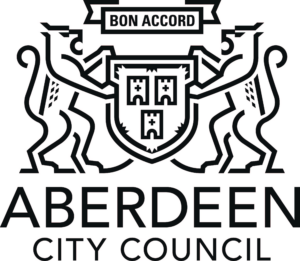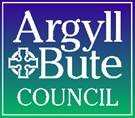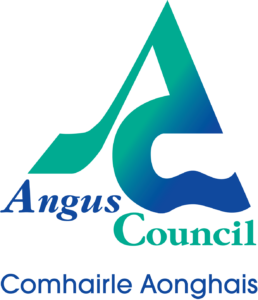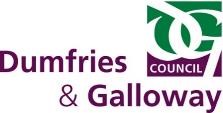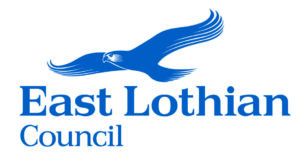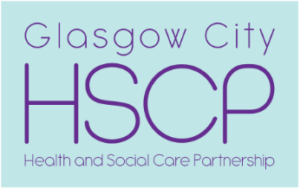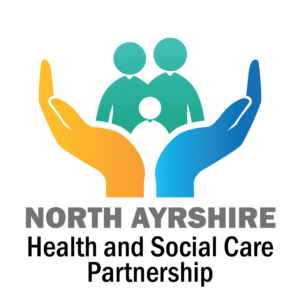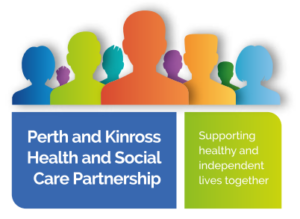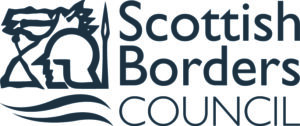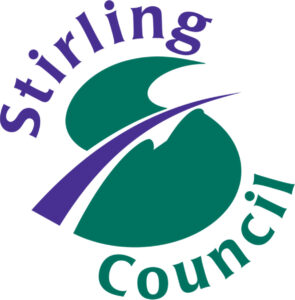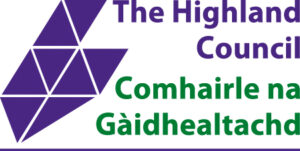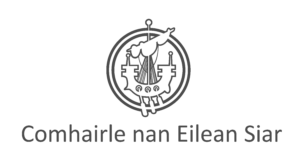Email contact: James Cox, Children and Families Lead, Social Work Scotland, on behalf of Children and Families Standing Committee Chairs, Jacquie Pepper and Alison Gordon
SECTION 1 – Introduction
Question 1(a)
Do you think that the introduction within the proposed new Learning Review Guidance makes it clear what the guidance is about?
Yes
Please explain your answer.
The introductory paras are clear that this is a replacement, not a revision. We endorse the definition of Purpose: to bring together agencies, individuals and families in a collective endeavour to learn from what has happened in order to improve and develop systems and practice in the future and thus better protect children and young people.
Comments / options to supplement
- We believe that human rights and children’s rights in terms of UNCRC must be referenced in the introduction. In this context, a learning culture is valuable in so far as it serves the purpose of upholding children’s rights, in particular in relation to harm from all forms of abuse, neglect, exploitation and violence.
- There has been a choice not to define the criteria for considering a Learning Review at the outset, and so one possibility would be to cross-reference to the paras setting out the circumstances in which a Learning Review might be considered or required.
- As the Guidance is about the undertaking of a learning review, the introduction could add that this includes the planning of a process in a manner that may complement but must not complicate other investigative and reporting processes.
- Overall could be said in the introduction that this replacement Guidance aims to promote a culture that supports learning and processes that are not investigations.
Question 1(b)
Do you think that the removal of the terms “initial” and “significant” case reviews will streamline current variations of the review processes across Scotland?
Yes, it is much clearer in relation to reviewing child protection situations that meet the criteria.
Please explain your answer.
The process as described appears robust and transparent and should level out the potential discrepancies in interpretations.
The process as described is likely to ensure a consistent focus on learning/ ensure that all processes have a focus on learning across a wide range of circumstances
However, it could be helpful to indicate reasons why there may be a decision ‘not to proceed’ when the case for a Learning Review has been made. The process and proformas are offered. The potential contributors to such a decision are not.
Some Social Work Scotland respondents consider that “as some issues might currently be concluded with an ICR, they may now require a fuller treatment”. We acknowledge that response will be proportionate but the consequence may be a need for the added resources.
SECTION 2 – Key features and learning reviews
Question 2(a)
Do you think that this section clarifies the purpose of Learning Review and is the paragraph on creating preconditions for learning helpful? Please provide your comments here:
The simplicity of the Guidance is helpful and yet there is the potential for learning and understanding learning processes at multiple levels.
Key features are well communicated : ( Inclusiveness, collective learning and staff engagement; a systems approach; proportionality and flexibility; timing and timelines )
A slight concern voiced by one area was that “ despite agreeing with the ethos and principle of promoting improved ‘learning’, that calling the replacement for a SCR a ‘Learning Review’ may mean that this process loses gravitas and may be less likely to attract senior practitioners (eg GPs, consultants and senior officers) who recognise the importance of the learning from an SCR.” Communication around changes in terminology would need to be clearly communicated to mitigate this risk.
Question 2(b)
Do you think the revised criteria for undertaking a Learning Review is appropriate and clear for Child Protection Committees?
Yes
Please explain your answer.
We support these criteria
Criteria: the child has died or has sustained significant harm or risk of significant harm. And either Child or sibling is or has been looked after or on CPR; or death by murder, suicide, violence, violence or reckless conduct for a child or sibling of a child.
However…. there is scope for consideration of learning in relation to transitional stages with clear implications for child and adult protection – as for instance in the recent SCR in Angus for an 18-year-old with many years of intermittent contact with services in urgent circumstances. Consideration could be given to processes that give rise to a shared understanding about systemic and practice improvement in transitional ages and stages.
This is the one of the most significant ways in which this Guidance could be strengthened
One respondent area suggested potential addition: “that the child or their sibling having been on the CPR or looked after or receiving aftercare or continuing care.
Question 2 c
Does the guidance reflect the learning culture we are trying to achieve in Scotland?
Yes
Please explain your answer.
Although there is flexibility in this approach there is also a clear process to be followed and a set of expectations and conditions that are described in plain terms which we endorse eg
- Parallel processes: the guidance lists 10 or so parallel reports/reviews and legal processes that may occur in parallel, acknowledging sensitivities and interaction. An early multi-disciplinary meeting is essential to plan to sequence
- A National Hub for Reviewing and Learning from the Deaths of Children and Young People is being set up to ensure that there is a coordinated process for all current review activity for all live-born children up to age 18 or 26th birthday for care leavers who were in receipt of aftercare or continuing care at the time of death.
- Initiation: Any member of the Child Protection Committee, agency or practitioner can raise a concern about a case that it is believed meets the criteria for a Learning Review and submit a notification to the CPC for consideration by a nominated person or subgroup. Guidelines on case outline and basis are provided; and on consideration of options for alternative analysis and shared learning; decision making; and family and media liaison
- Timeframe: recommended 28-42 days for completion of the initial process
- The mechanism for joint working across CPCs: must be planned early
- Individual consideration: must be planned for each child involved
- Malpractice: issues arising to be dealt with by existing protocols
- Approach: systemic, participatory, proportionate, focussed, shared learning
- Review Team: Chair, Team members, Reviewer(s), Administrator
- Role of Chair, administrator, team members and ‘Reviewer’ ( who must facilitate and manage the learning emerging throughout the review process and take responsibility for the production of the report): key components and spec.
- Enabling factors: supportive COG, resources
- Terms of Reference: an essential guiding statement for process and reporting
- Steps in collation: single agency chronologies and summaries
- Emerging issues: and liaison with COG as needed
- Engaging the family: a family liaison strategy is outlined, tailored to each review
- Engaging practitioners and managers: strategic approach and value of each step
- Review team meetings
- Information governance and retention ( still in draft)
- The Report: learning points, the case for change, strategic options, evidence base, responsibilities, and review of progress plan. Timescale ( 6-9 months); publishing and communication. Liaison with National Hub.
- Flow chart of processes
- Dissemination strategies, local and national
- Implementation approach and strategy.
- (One area commented positively on “the idea of using group sessions”)
Question 2(d)
Should any other information be added in relation to parallel processes in this section (p7)?
Yes, it needs to consider other processes noted in the comments box below.
Please explain your answer.
1. The connection with the Child Death Hub purpose and protocol could be more clearly delineated
2. A definition of the types and purposes of the parallel investigations processes that may occur ( or link to same for each example) would be helpful.
3. Where there are parallel processes, or some processes concluding earlier than others, it will be helpful to (a) be sure to capture learning from one process (b) have a mechanism to resolve any tension in findings/implications from different types of process
4. Please see the issue above in relation to transitional learning in child and adult protection.
SECTION 3 – Initiation of a learning review?
Question 3(a)
After consideration of the gathered data, the guidance states a nominated person or sub-group will then make a recommendation to the CPC as to whether or not to proceed with a Learning Review (p10). Is the information provided in Template (Annex1.3) for that purpose enough?
Yes
Please explain your answer.
It lists essentials. It might be possible to add additional specific checklist items eg whether there are implications for other processes and complex investigations in relation to other children and adults – but the current checklist allows for such details to be folded in as appropriate
One area commented that “ It would be helpful for the CPC to know the criteria on which the nominated person(s) (who has/have reviewed the initial information) recommends that the Learning Review should be undertaken. Perhaps this could be added to the ‘brief rationale for the recommendation’. “
Others consider that ambiguity may be picked up between the introductory statement that “it is the CPC, on behalf of the Chief Officers Group, that decides whether a Learning Review is warranted” and the latter phrase (under the heading “Context”): “The 2019 Protecting Children & Young People – Child Protection Committee and Chief Officer Responsibilities guidance state that Chief Officer Groups should be advised by the chair of the CPC of any cases that should be considered in respect of meeting the criteria for warranting a Review. Once agreed that there is a need to undertake a Review, the CPC should consider and agree how the review is to be undertaken…” (This implies that the Chief Officers Group could be responsible for making the decision.)
Question 3(b)
With reference to the paragraph on media interest (p11) do you have any examples of situations that are not covered within this section?
Please provide your comments here:
There have been instances where specific staff have been named at an early stage in processes – for example where cautionary suspensions have occurred and no wrongdoing/malpractice is as yet evidenced – and their names have been published to their lasting harm and that of their families.
Some individuals and groups may be excited by and commercially exploitative blame. Some responses can be threatening and indeed dangerous. While it is necessary to have robust processes to ensure that responsibilities are upheld and lessons are learned, it is essential that all aspects of Learning Reviews are extremely careful in relation to the potential dynamics of blame and the human impact of these processes’ incautious sharing of detail.
It may be helpful to indicate media strategy considerations in relation to a learning review.
There may be different considerations for family, staff, organisations, chief officers and community amongst others. There are implications for appropriate training; identification of single points of contact; coordination by the CPC and oversight by Chief Officers.
This section might helpfully provide guidance about the management of any ongoing public interest.
Question 3c
Is the information provided in the guidance clear when a situation does not meet the criteria for a Learning Review? (p12)
No
Please explain your answer.
We may have misunderstood but reasons for potential decisions not to proceed do not seem to be indicated
One area commented that “ It would be helpful to give some examples of the kinds of situations you are meaning, where a Learning Review is not required but where some reflective learning may still be appropriate.”
SECTION 4 – UNDERTAKING THE LEARNING REVIEW
Question 4(a)
Whilst not prescriptive to acknowledge local variations;
Are you satisfied with the clarity of the expectations as described for CPCs when setting up a Review Team to conduct a Learning review using a systemic approach (p14) and;
Are you satisfied the roles of the Chair and the Review Team are clear (p15)?
Please provide any comments on this section you may have here:
Yes, although there may be training implications for the consistent application of a systemic approach.
Question 4(b)
The skills, attributes, experience, and knowledge associated with the various roles within a Review Team are outlined in Annex 4 (p44) of the guidance. Do you think this supports the local process of appointing the identified people to undertake these roles?
Yes
Please explain your answer.
The descriptors are strong, especially on qualitative features.
However: As indicated earlier in the response an awareness of the issues to do with the interface between child and adult systems is also necessary, both because of the relevance to parents and families around a child and also because of the predictable and avoidable vulnerabilities of some children with complex needs and histories moving through to adult life and services, who come to harm during this transitional fracture zone.
Question 4c
A Learning Review is a collective endeavour to bring together agencies, individuals, and families to learn from what has happened in order to better protect children and young people in the future. Is the information provided around family liaison (p18) helpful?
Yes, it outlines the expectations when setting out to conduct a review
Please explain your answer.
It is helpful that this is so clearly laid out in terms of process. There may be issues of adult culpability or adult vulnerability for some but not all involved and this is, therefore, a complex planning question in some cases. The role of the lead professional could be mentioned here. Their names are to be tabled in one place. They must have a role in this strategic discussion.
One area commented “ Support for families should also be highlighted in this section as integral to the review approach. In our experience, even where a family does not wish to be engaged with the process, it is critical that they at least have an identified single point of contact. Better guidance for CPCs regarding how best to support staff and organisations through these processes may be more likely to increase the opportunities to elicit and maximise learning. Staff and organisations will experience these processes and resulting impact differently, depending on role and proximity to the situation.”
Question 4(d)
The purpose of a Learning Review report is to identify key learning points and how and why that learning has emerged throughout the review process. Reports should be clear, succinct, and as anonymous as possible. Is the information provided in this section of guidance (p21) clear on both the purpose of the report and its publication? Please provide any comments here:
Broadly, yes.
One area has commented that it would be helpful to clarify the reason for the expectation that the learning points should be aligned to the quality indicators within the Care Inspectorate Quality Framework.
SECTION 5 – Dissemination & implementing learning
Question 5(a)
Does the information provided in relation to the dissemination and implementation of learning from a Learning Review at national and local levels meet your requirements?
Please provide comments here:
Broadly Yes – however this aspect of sharing and implementing learning may require broader discussion and strategic consideration. – How are such learning processes reflected in CSPs, self-evaluations, inspection processes etc
It would be helpful to describe how CPCs may fulfil responsibilities to ensure that the learning is disseminated.
One area commented that: “We believe that it is important to underline the need to be outcome-focused – what does sustained safer practice look like; to track whether learning has changed people’s practice; whether that change is sustained; and whether that has actually impacted on people’s lives”.
And another commented on the need to define learning for the organisation at all levels. This includes Chief Officers and the CPC – to reflect on whether their own decisions had an impact on eventual outcomes.
Other considerations
This section offers those reading the draft guidance an opportunity to make comments on the following areas;
Process Map (page 24)
Please add your comments here:
Helpful outline
One respondent area suggested that “…given the statement on page 19, the meeting with family should take place before the practitioner and manager events”.
Annexe 1 – Templates (pages 27 – 40)
Please add your comments here:
The templates suggested timescales do not seem to be reflected in the earlier guidance e.g.14 days
Do you have any other comments about the draft guidance?
Summary reflections
- The connection with the Child Death Hub’s purpose and protocol could be more clearly delineated
- A definition of the types and purposes of the parallel investigations processes that may occur ( or link to the same for each example) would be helpful.
- Timescales – proposals are positive
- Learning culture – proposals are positive
- Proportionality – approach is positive
- Systemic focus – approach is positive – although please note points above on transitions.
- Planning in early stages including re involvement of family – essential, positive
- Information sharing and management and media handling issues – essential, positive
- Potential for transparent connection with inspection processes and self-evaluation in areas where these issues coincide.- this is perhaps a gap
- Potential for the report to cross-refer to learning in England and Wales and we have benefited from the experience of Barbara Firth here. Would it be appropriate to add explicitly that there are issues and trends and good practice that are relevant across borders: https://learning.nspcc.org.uk/news/2020/march/uk-government-publishes-three-new-reports-about-learning-from-case-reviews-in-england
- Potential for an explicit focus on the ecology of concern. This is akin to a ‘systems’ perspective but allows for consideration of the significance of context and relationships in the arising or addressing of identified concerns. The significance of place and interface between technology-assisted and other harms might be explicitly mentioned
- Potential to relate learning and improvement to ‘rights’, as indicated in the opening comment
- Potential to relate learning to national trends, policy context, public health context, legislative change and environmental stresses including poverty, Covid/public emergency response etc
- Potential to be more ‘graphic’ in portrayal/representation of areas of potential learning,
- Potential areas of learning include translation into pre-qualifying and newly qualified worker training and training in relation to supervision

